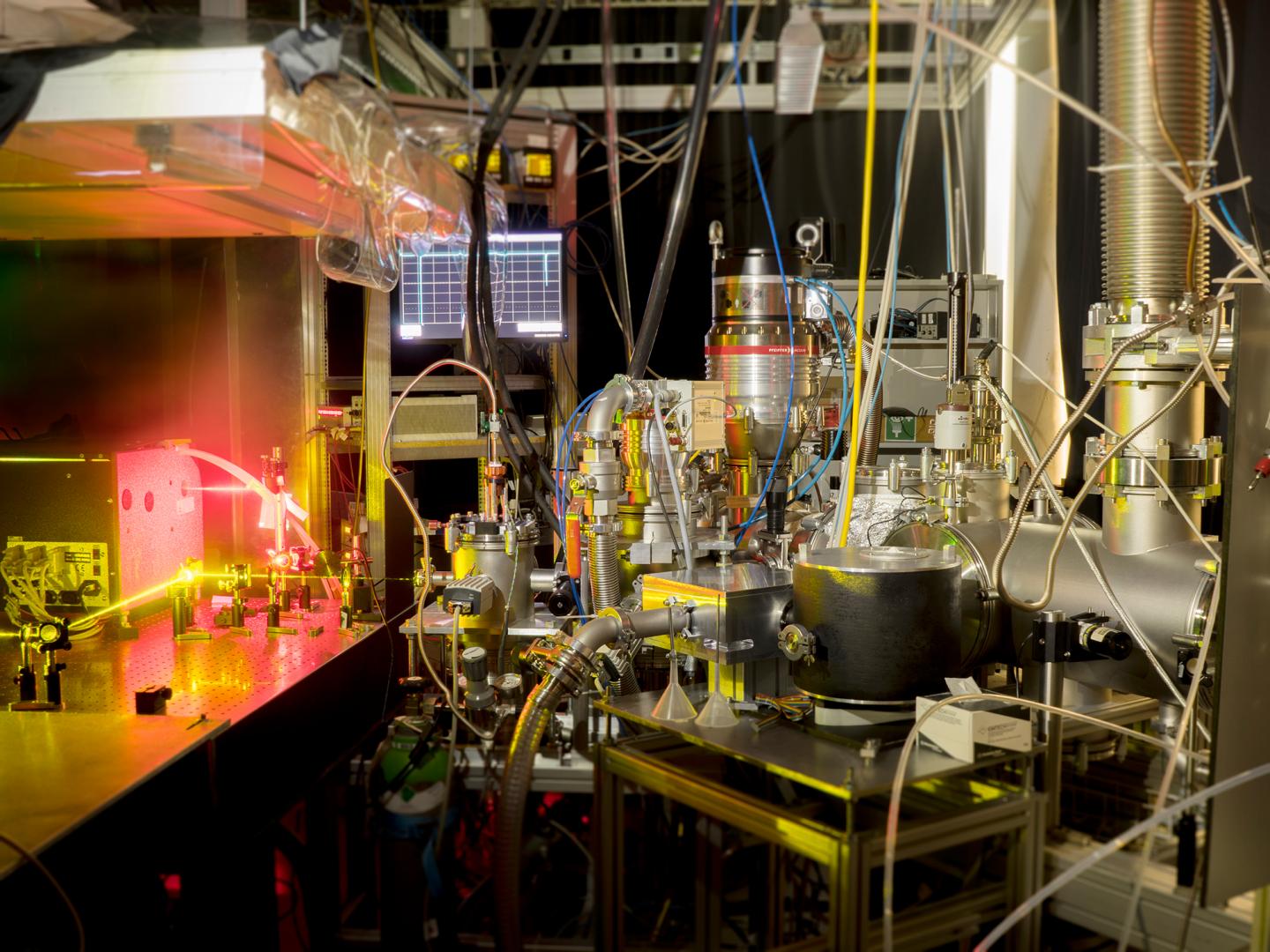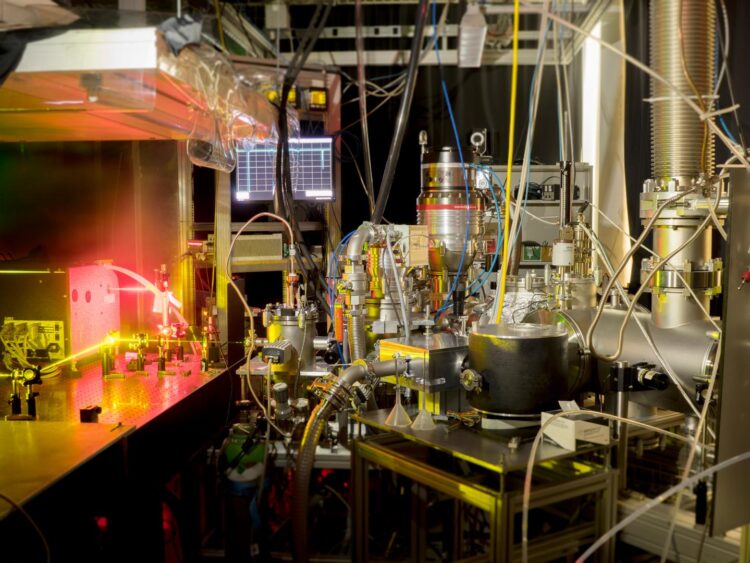
Credit: ETH Zurich / Ruth Signorell
Aerosols are suspensions of fine solid particles or liquid droplets in a gas. Clouds, for example, are aerosols because they consist of water droplets dispersed in the air. Such droplets are produced in a two-step process: first, a condensation nucleus forms, and then volatile molecules condense onto this nucleus, producing a droplet. Nuclei frequently consist of molecules different to those that condense onto them. In the case of clouds, the nuclei often contain sulphuric acids and organic substances. Water vapour from the atmosphere subsequently condenses onto these nuclei.
Scientists led by Ruth Signorell, Professor at the Department of Chemistry and Applied Biosciences, have now gained new insights into the first step of aerosol formation, nucleation. “Observations have shown that the volatile components can also influence the nucleation process,” Signorell says, “but what was unclear was how this was happening at the molecular level.” Previously it was impossible to observe the volatile components during nucleation in an experimental setting. Even in a famous CERN experiment on cloud formation, the “Cloud” experiment, certain volatile components could not be directly detected.
Volatile components detected for the first time
The ETH researchers developed an experiment aimed at the first microseconds of the nucleation process. In the experiment, the particles formed remain intact during this time and can be detected using mass spectrometry. The scientists looked at nucleation in various gas mixtures containing CO2 and for the first time, they were able to detect the volatile components as well – in this case, the CO2. The researchers could show that the volatile components were essential for the formation of nuclei and also accelerated this process.
An analysis of the experimental data revealed that this acceleration is the result of the volatile components catalysing the nucleation of other, less volatile components. They do this by forming short-lived, heterogeneous molecular aggregates, known as chaperon complexes. “Because temperature determines the volatility of gas components, it also plays a decisive role in these processes,” Signorell explains.
One reason the new research results are interesting is that they improve the understanding of nucleation, its molecular mechanisms and speed, in order to properly account for it in models for, say, cloud formation in the atmosphere. In addition, the results should help to improve the efficiency of technical processes for producing aerosols – such as the use of rapid cooling to capture CO2 from natural gas.
###
Reference
Li C, Krohn J, Lippe M, Signorell R: How volatile components catalyze vapor nucleation, Science Advances, 13 January 2021, doi: 10.1126/sciadv.abd9954
Media Contact
Prof. Dr. Ruth Signorell
[email protected]
Original Source
https:/
Related Journal Article
http://dx.





